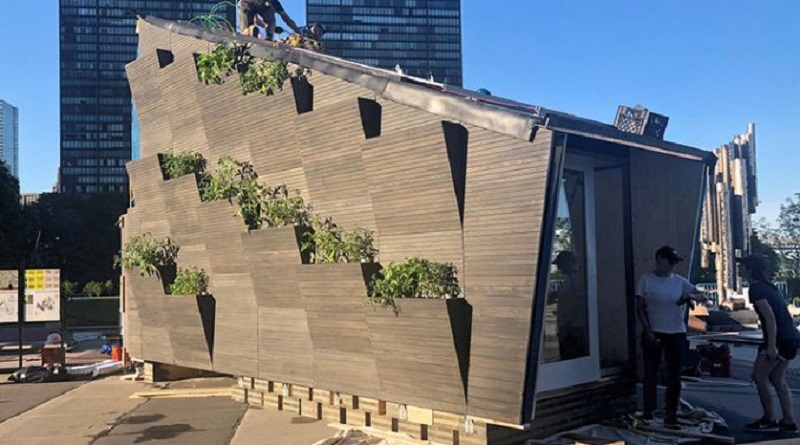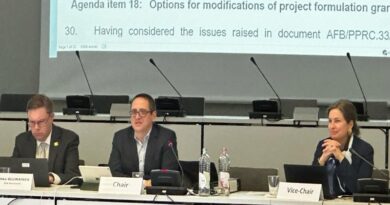UNEP, Varsity, UN-Habitat unveil eco-housing module
United Nations Environment Programme (UNEP) and Yale University in collaboration with UN Habitat on Monday July 9, 2018 unveiled a new eco-housing module, to spark public discussion and new ideas on how sustainable design can provide decent, affordable housing while limiting the overuse of natural resources and climate change.
The 22-square-meter “tiny house” is fully powered by renewable energy and designed to test the potential for minimizing the use of natural resources such as water.
The Ecological Living Module – unveiled during the United Nations High-level Political Forum on Sustainable Development – is constructed primarily from locally-sourced, bio-based renewable materials.
UN Environment’s collaborator, the Yale Center for Ecosystems in Architecture, worked with Gray Organschi Architecture to design, fabricate and install the Ecological Living Module. The unit is efficient and multi-functional, accommodating up to four people, serving both domestic and commercial purposes.
“We clearly need more housing, but the key thing is that we also need smarter housing” said UN Environment Head, Erik Solheim. “The housing sector uses 40 per cent of the planet’s total resources and represents more than a third of global greenhouse gas emissions. So making them more efficient will benefit everyone, and it’ll mean lower bills too. Innovations like the Ecological Living Module are what we need more of.”
“Adequate housing is at the heart of sustainable urbanisation” said UN-Habitat Executive Director, Ms. Maimunah Mohd Sharif. “The use of proper building materials, better planning and improved construction techniques can make energy use in buildings more efficient. If adopted widely, this practice can create jobs and prosperity with lower greenhouse gas emissions.”
Engineered to operate independently, the module’s built-in systems include solar energy generation using less than 1 percent of toxic semiconductor materials, on-site water collection, micro agricultural infrastructure, natural daylighting, plant-based air purification, passive cross-ventilation, and a range of flexible, adaptable components for living and working.
Around one billion people worldwide currently live in informal settlements, while millions more live in buildings that are not environmentally friendly. Rapid urbanization and economic growth challenge communities to sustainably expand capacity, heightening the need for innovation in building systems and infrastructure.
“Architecture must address the global housing challenge by integrating critically needed scientific and technical advances in energy, water, and material systems while remaining sensitive to the cultural and aesthetic aspirations of different regions,” said Deborah Berke, Dean of the Yale School of Architecture.
The first demonstration unit, located in the UN Plaza in New York City, from July 9-18, contains features relevant to the local climate and context of New York. Future iterations of the module – including one in Kenya, the home of UN Environment – will respond specifically to local climatic and cultural contexts.




